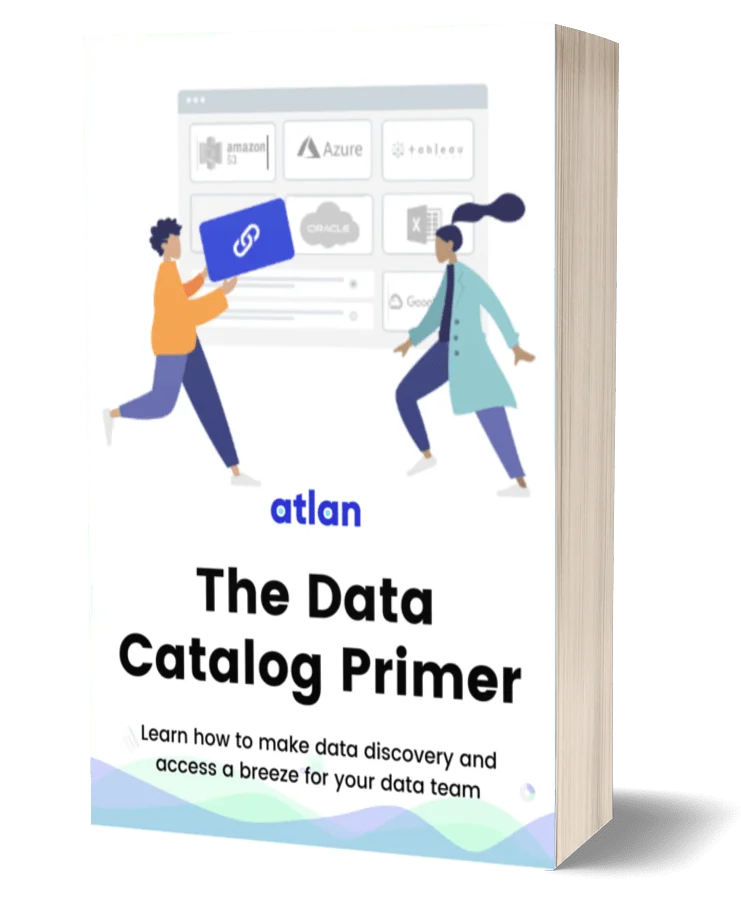7 Data Catalog Capabilities That Can Unlock Business Value for Modern Enterprises

Share this article
Being cognizant of data catalog capabilities helps evaluate the strengths of a data cataloging solution in effectively managing your data and metadata.
According to the Forrester Wave™ Enterprise Data Catalog for DataOps Q2 2022, a modern enterprise data catalog should:
- Address the diversity, granularity, and dynamic nature of data and metadata
- Generate deep transparency of the nature and path of data flow and delivery
- Deliver a UI/UX that reinforces modern DataOps and engineering best practices
The above requirements can be broken down into seven distinct data cataloging capabilities. Let’s take a look.
Table of contents
Permalink to “Table of contents”- 7 Essential Data Catalog Capabilities
- Natural language search and discovery of data assets
- Active metadata to enable the bi-directional flow of metadata
- End-to-end visibility of data flow
- Embedded collaboration to prevent context switching
- Proactive data governance for personalized, granular access control at scale
- Intelligent automation to reduce manual tasks in data management
- Integration with the rest of the data stack
- Wrapping up
- Data catalog capabilities: Related reads
7 Essential Data Catalog Capabilities
Permalink to “7 Essential Data Catalog Capabilities”There are 7 essential data catalog capabilities to consider when evaluating solutions:
- Natural language search and discovery of data assets
- Active metadata to enable the bi-directional flow of metadata
- End-to-end visibility of data flow
- Embedded collaboration to prevent context switching
- Active data governance for personalized, granular access control
- Intelligent automation to reduce manual tasks in data management
- Integration with the rest of the data stack
Let’s explore each data catalog capability to understand its significance to modern data management.
Natural language search and discovery of data assets
Permalink to “Natural language search and discovery of data assets”Natural language search
Permalink to “Natural language search”A data catalog serves as a centralized repository of data assets from diverse data sources. This includes dashboards, SQL queries, data definitions, and metrics, in addition to tables.
So, one of the most fundamental data catalog capabilities is empowering all data practitioners to look up any data asset with a Google-like search interface.
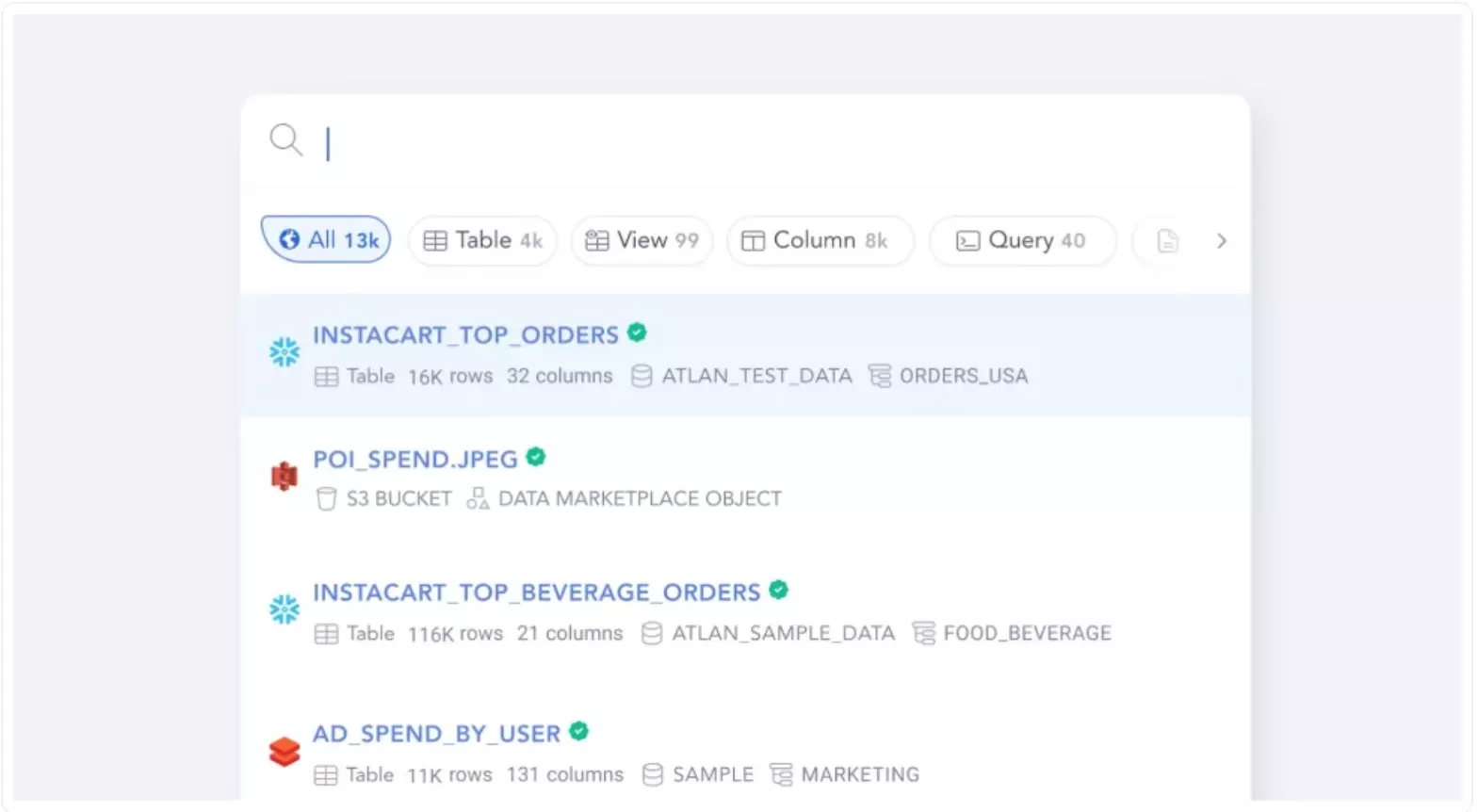
A Google-like search interface for your data estate. Image by Atlan.
Data discovery
Permalink to “Data discovery”The data catalog should also help you fine-tune the search results with metadata properties to speed up data discovery. These properties can include asset type, classification, attributes, usage, and more.
Additionally, just like Google, the search should also intelligently display related search results — similar data assets, other data assets from the same owners, or connected reports and dashboards.
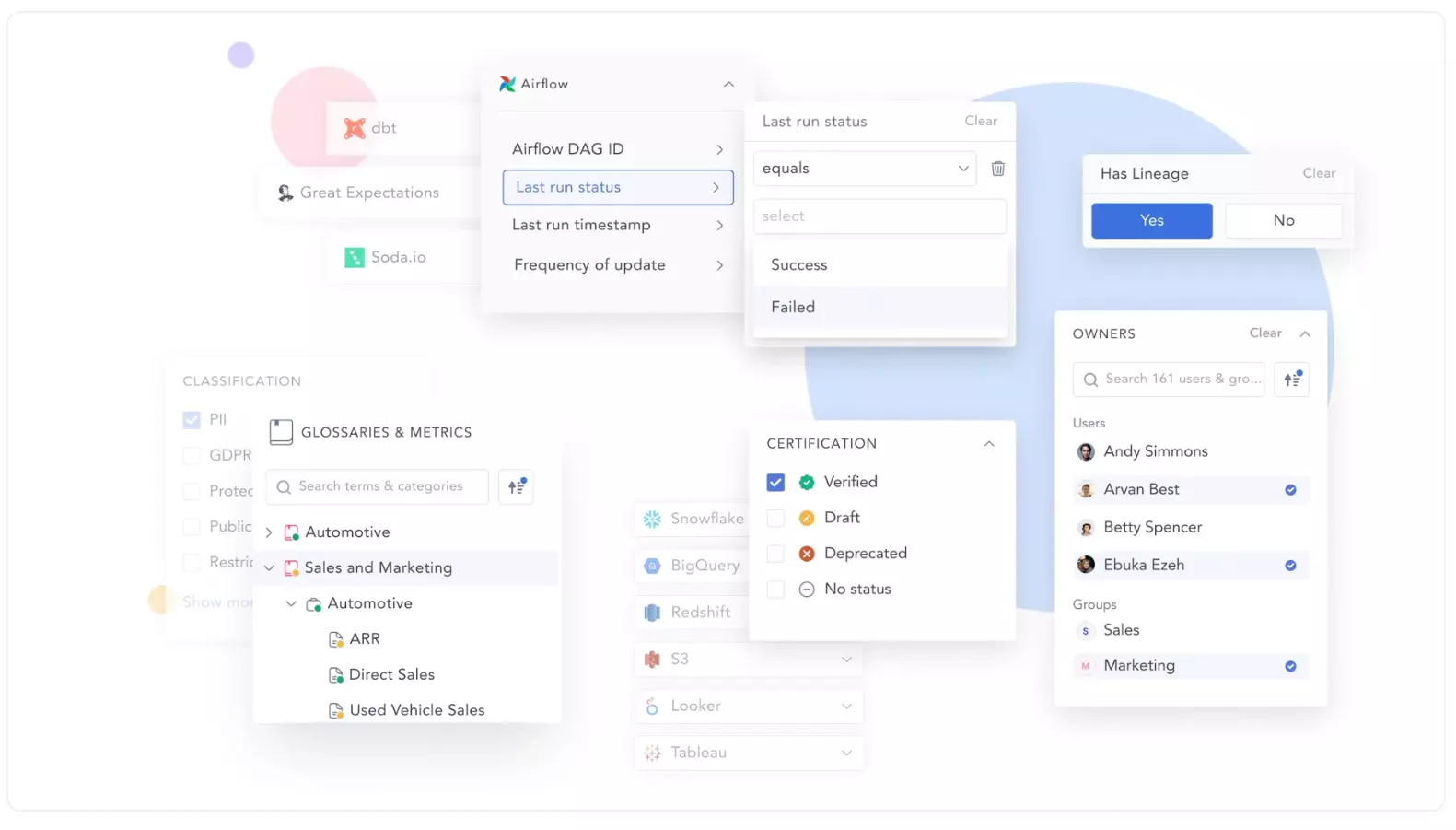
An example of how metadata filters in a data catalog can improve data discovery. Image by Atlan.
Active metadata to enable the bi-directional flow of metadata
Permalink to “Active metadata to enable the bi-directional flow of metadata”Another essential data catalog capability is enabling the bi-directional flow of metadata with active metadata management. By leveraging active metadata, you can continuously analyze data, plus everything that happens to it or is done to it.
Meanwhile, active metadata will transform your data catalog into an always-on, intelligent data ecosystem that drives several data and analytics use cases to cut costs and drive business value.
End-to-end visibility of data flow
Permalink to “End-to-end visibility of data flow”End-to-end visibility of data flow is crucial to build trust in your data.
When you can map data flow with cross-system, column-level lineage, you understand where your data comes from, the transformations that its undergone, and the dashboards it affects.
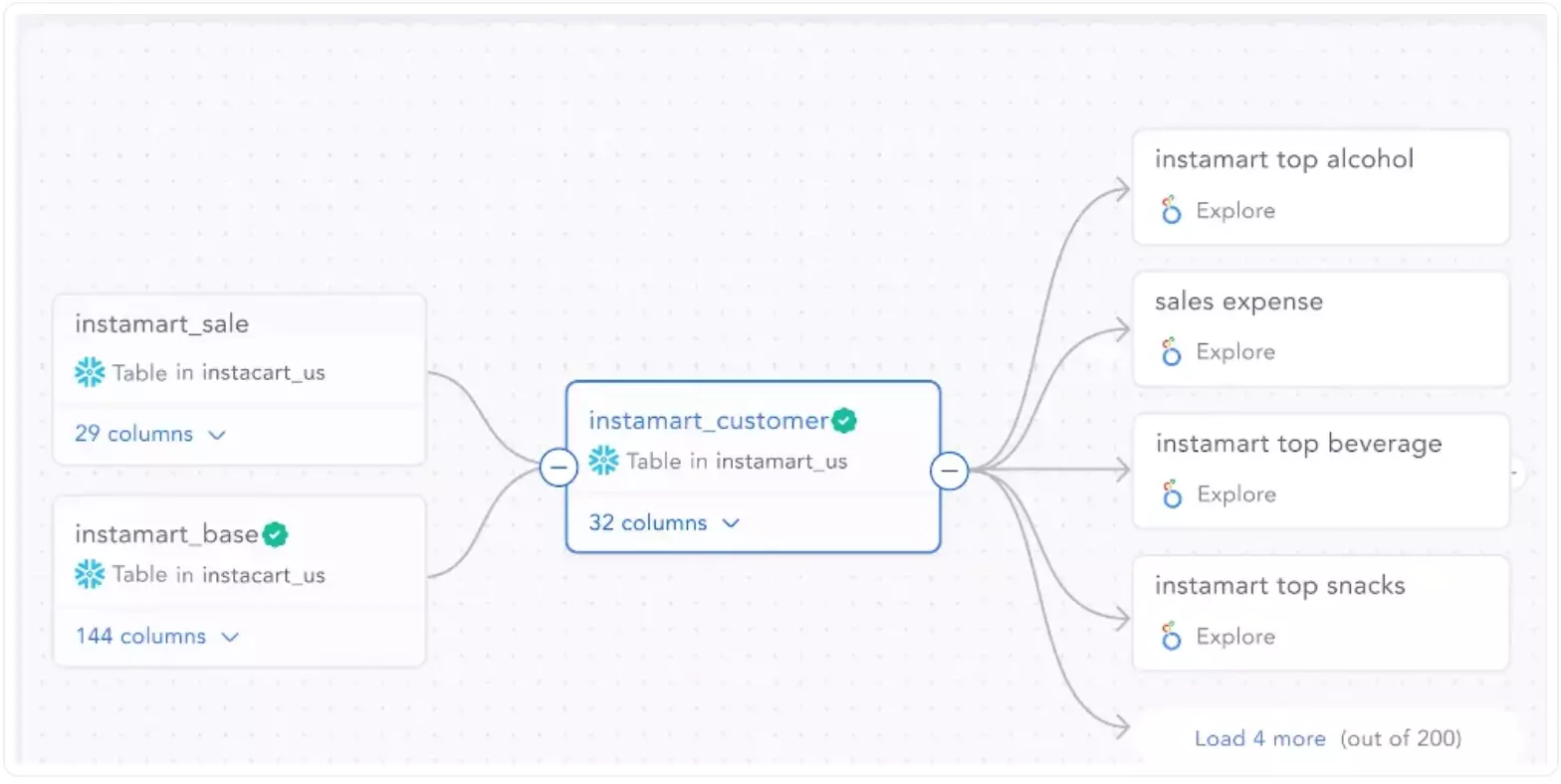
End-to-end visibility of data flow. Image by Atlan.
Embedded collaboration to prevent context switching
Permalink to “Embedded collaboration to prevent context switching”Embedded collaboration is about work happening where you are, with the least amount of friction. It helps you power your daily workflows with microflows.
As a result, you can stop switching between apps. Instead, you can use the data catalog to do everything from reviewing access requests to raising support tickets.
So, you can work seamlessly with the tools you use and collaborate with your team without ever leaving the data catalog.
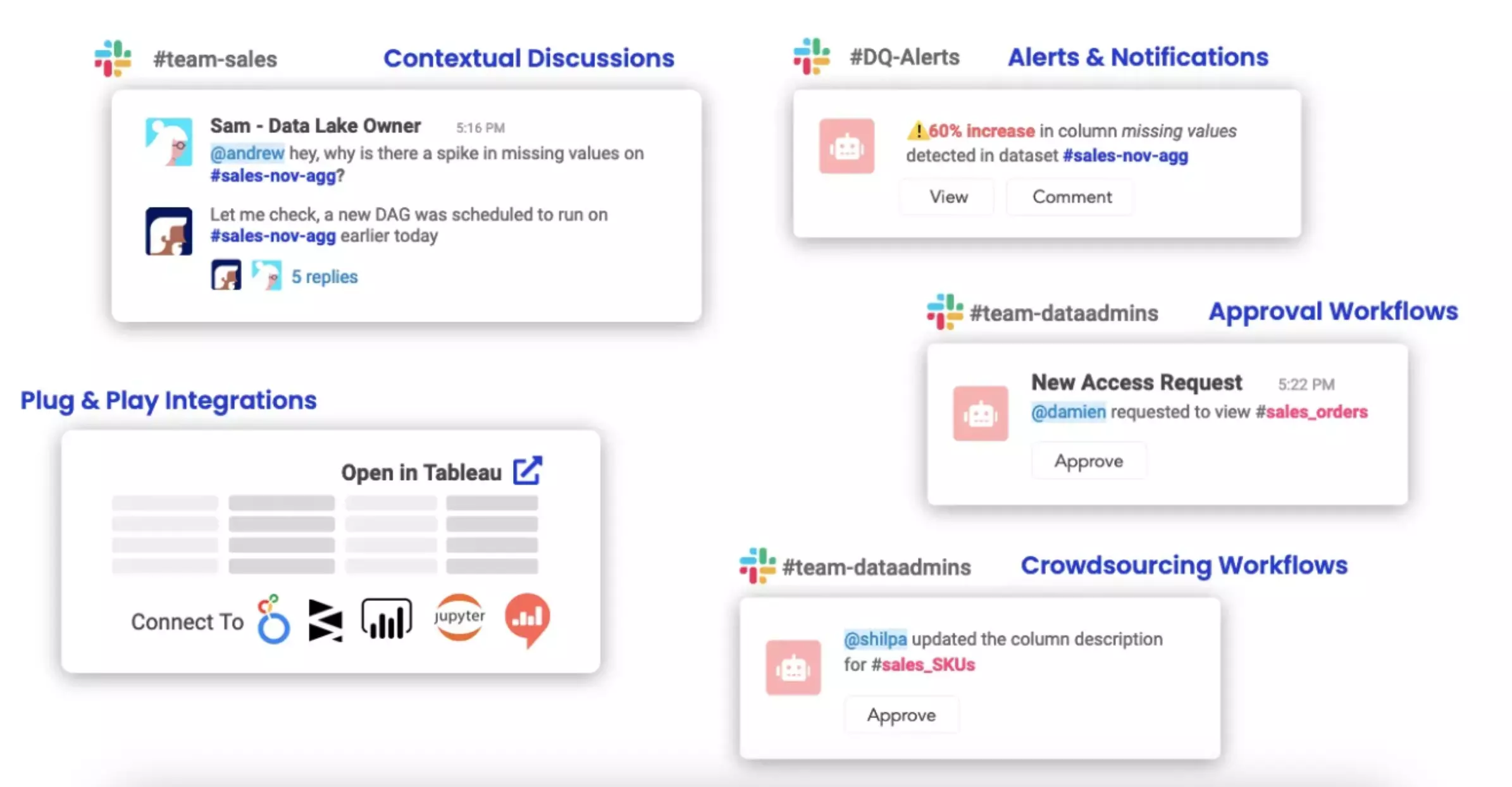
What embedded collaboration would look like in a data catalog. Image by Atlan.
Proactive data governance for personalized, granular access control at scale
Permalink to “Proactive data governance for personalized, granular access control at scale”Historically, data governance was an afterthought to data and analytics architecture and use cases. However, it must become a part of your daily workflows to be scalable, so that your data assets are trusted, well-documented, and of the highest quality.
That’s why proactive data governance powered by customization, automation, and active metadata is one of the key data catalog capabilities for data practitioners.
For instance, the data catalog should be able to customize access policies based on user roles, domains, or even project types using active metadata. It should leverage automation to classify PII data, propagate custom classifications via lineage, and apply masking policies to sensitive data.
Intelligent automation to reduce manual tasks in data management
Permalink to “Intelligent automation to reduce manual tasks in data management”Automating tasks such as classifying sensitive data, updating data documentation, or validating asset certifications can save time and increase your productivity. Data practitioners can use this time to focus on meaningful projects that will drive business value.
In addition to automation, modern data catalogs like Atlan are also equipped AI assistants that give intelligent suggestions for data asset documentation—data asset descriptions, READMEs, ownership, and more.
So, intelligent automation is a must-have data catalog capability for modern data enterprises.
Integration with the rest of the data stack
Permalink to “Integration with the rest of the data stack”When a data catalog can integrate with all parts of the modern data stack, data practitioners can use one platform to innovate, work, and solve business problems.
The data catalog should support native integrations with data sources, BI tools, data movement tools, query engines, orchestration tools, and more. However, it should also connect with other home-grown tools.
That’s why you should look for data catalogs built with an openly accessible API layer as this will allow you to bring in metadata from any data product or source.
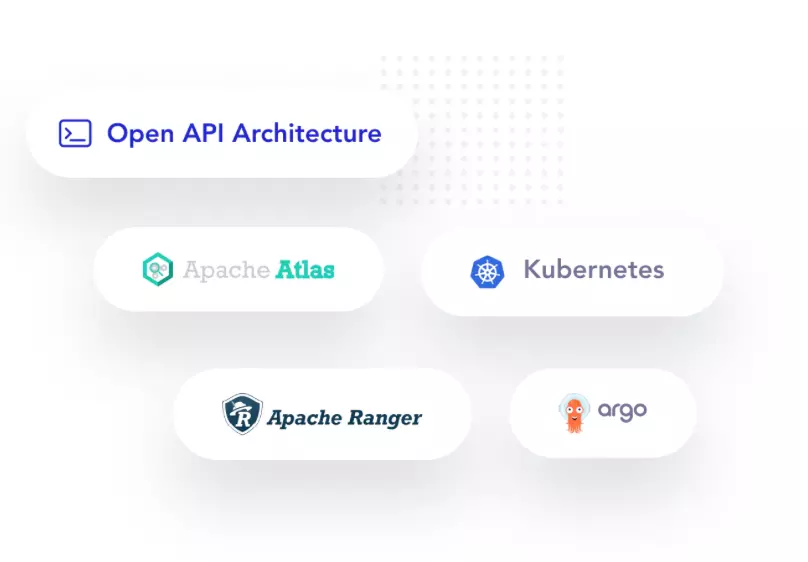
An open API architecture allows data catalogs to integrate with all data products. Image by Atlan.
Wrapping up
Permalink to “Wrapping up”Data catalog capabilities are essential for effectively managing data and metadata. So, you should prioritize selecting data cataloging solutions that match the capabilities listed above.
That means looking for data catalogs that activate metadata, leverage automation and AI, are open by default, and weave data governance into your daily workflows.
Data catalog capabilities: Related reads
Permalink to “Data catalog capabilities: Related reads”- What Is a Data Catalog? & Do You Need One?
- AI Data Catalog: Exploring the Possibilities That Artificial Intelligence Brings to Your Metadata Applications & Data Interactions
- 8 Ways AI-Powered Data Catalogs Save Time Spent on Documentation, Tagging, Querying & More
- 15 Essential Data Catalog Features to Look For in 2024
- What is Active Metadata? — Definition, Characteristics, Example & Use Cases
- Data catalog benefits: 5 key reasons why you need one
- Open Source Data Catalog Software: 5 Popular Tools to Consider in 2024
- Data Catalog Platform: The Key To Future-Proofing Your Data Stack
- Top Data Catalog Use Cases Intrinsic to Data-Led Enterprises
- Business Data Catalog: Users, Differentiating Features, Evolution & More
Share this article






















